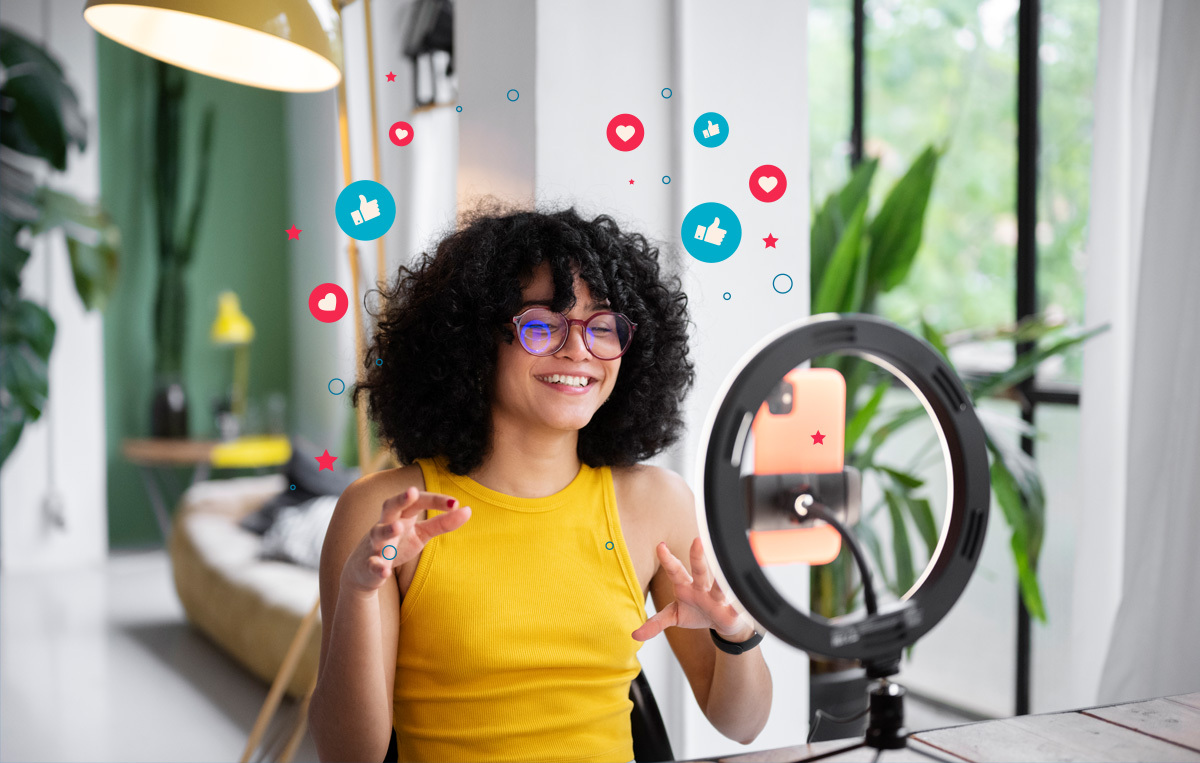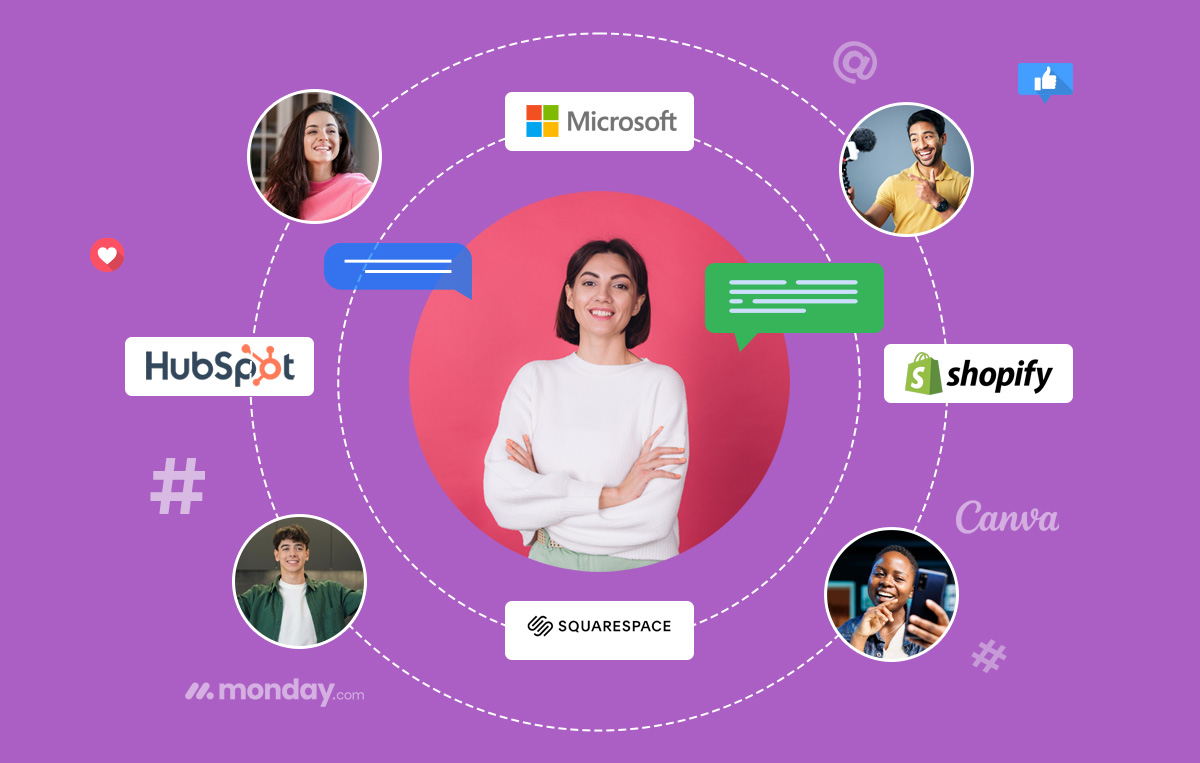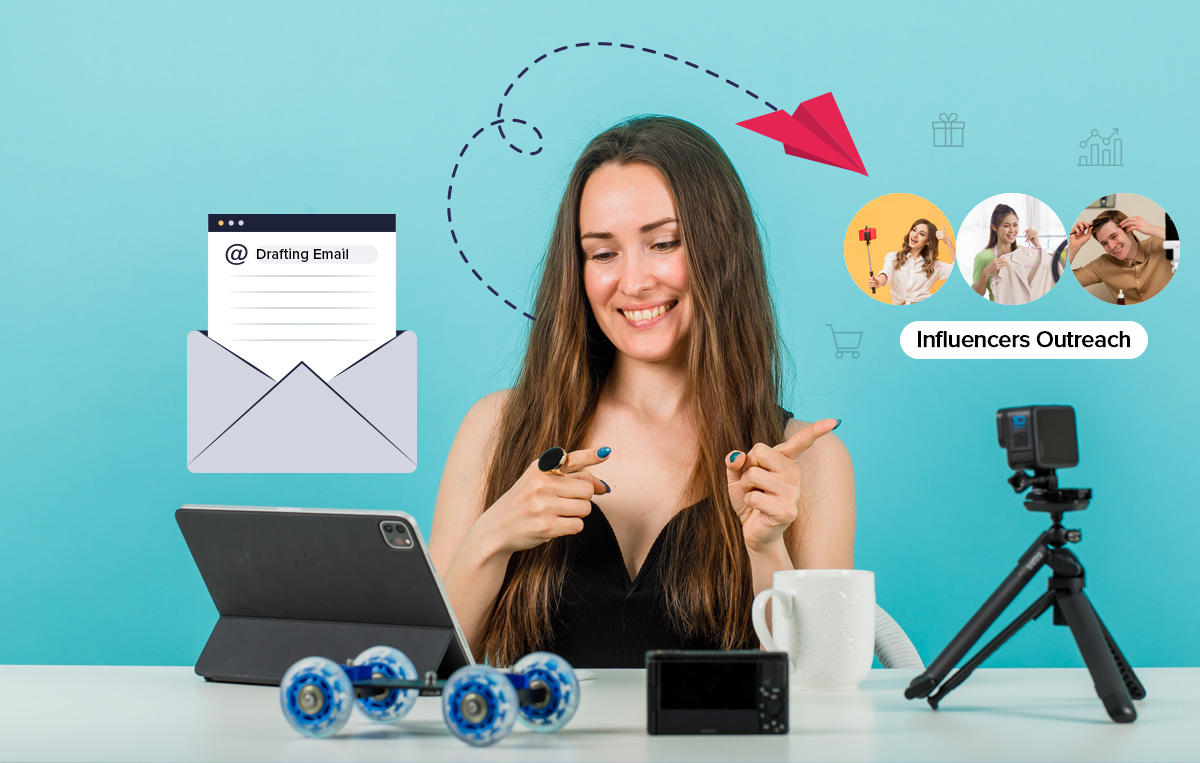Influencer marketing has rapidly become a key strategy for many marketers. In fact, 80% of marketers of marketers now have a specific budget set aside for influencer campaigns.
Marketers understand that people trust the words of influencers rather than their own.
Audiences trust influencers for the unique and valuable expertise they bring to the table. So, when these same influencers promote any relevant brand’s product or service, they are likely to try them.
We’ve found influencer marketing dramatically expands our brand’s reach and authenticity. Our recent influencer marketing campaign is a testament to that.
We at SocialPilot recently collaborated with the truly remarkable Luke Shalom, who is an micro-influencer with over 49K followers. Luke was an absolute gem to work with, and his contributions helped us achieve a fantastic level of engagement and generate valuable leads.
As you prepare to launch your influencer marketing campaign, you must have a proper plan in the place to guide you at every step.
In this comprehensive guide, we will draw on our experience to help you create a robust influencer marketing strategy. And yes, we will also share insights on how to avoid some common pitfalls that often derail influencer marketing campaigns.
But first, let’s start from the basics.
What is Influencer Marketing?
Influencer marketing is all about brands teaming up with individuals, known as influencers, who have a loyal following on social media platforms and other digital channels. The marketing part happens when these individuals leverage their influence and reach to promote the brand’s products or services.
This is the basic definition, but there’s more.
See, these influencers aren’t just popular for no reason. They are experts in a particular niche and post content on social media revolving around the same niche, catering to a specific and engaged audience.
For businesses operating within the same niche, such influencers act as a great bridge to connect them with their ideal audience.
For the same reason we collaborated with Luke Shalom, who is nothing short of a triple-threat influencer for us. Not only does he boast an impressive following of over 49K+, but he also puts our tools to excellent use for his agency’s clients. What’s more? His expertise has earned him a devoted following of agencies seeking his invaluable advice.
Did our marketing efforts with Luke benefit our brand in any way? More importantly, does influencer marketing even work?
Let’s find out.
Why is investing in Influencer Marketing Important?
When we started out, we had similar doubts. Is influencer marketing even worth it? After all, when you stack it up against other marketing strategies, it can seem expensive, unconventional, and somewhat unpredictable.
On the flip side, influencer marketing has a lot of advantages that we realized while running multiple influencer marketing campaigns.
This is our perspective.
Enhanced Brand Awareness
78% of marketers consider influencer marketing an effective strategy for increasing brand awareness. You can count me in the same pool!
Thanks to their massive list of loyal followers, influencers can increase the awareness of the brand they collaborate with and help them make meaningful connections.
When a brand collaborates with an influencer whose audience aligns with the brand’s target demographic, the brand gets introduced to a larger and more relevant audience who probably wouldn’t know about the brand before.
We experienced something similar when Luke’s collaboration post was released. A lot of people who were our potential customers but hadn’t heard about SocialPilot got introduced to us.
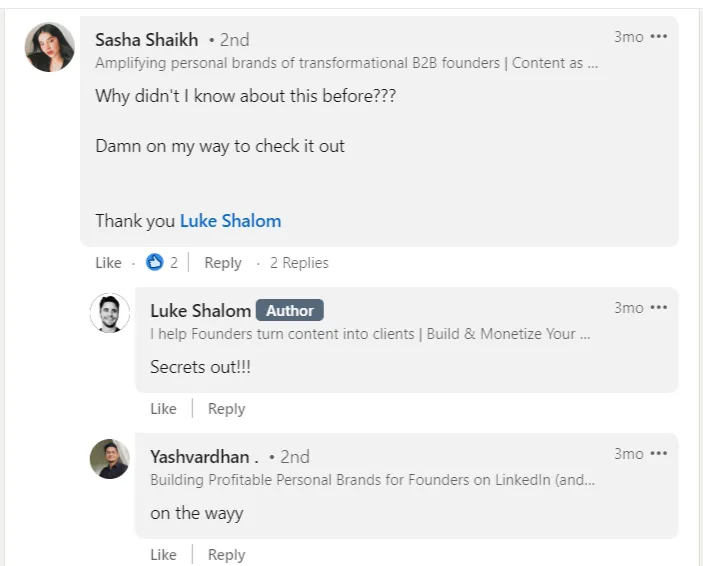
Not only that, but the collaboration helped us reshape the perception of our tool. Some people thought we were just a post-scheduling tool, but Luke’s post effectively showcased a multitude of our agency-friendly features to the audience.
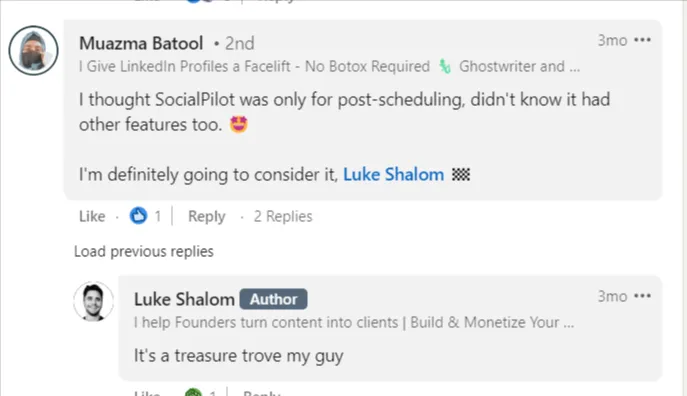
Increased Audience Engagement
Influencers often have highly engaged audiences who actively interact with their content. A promotion backed by an influencer gets enough eyeballs on your brand and attracts good engagement.
Our collaboration with Luke yielded impressive results. We received over 200 interactions, 154 comments, and 17 reposts. What’s even more exciting is that the majority of those engaging with the post were our ideal target audience.
But the engagement wasn’t limited to just his profile.
SocialPIlot’s LinkedIn page also saw a drastic engagement rise of 7%, and the impression grew to 25,000 in the week Luke posted.
Social media algorithms prioritized engagement the most. When Luke’s followers engaged with the post, their own followers started seeing it in their feeds. This whole thing just kept snowballing, bringing in more reach and engagement.
Narrow targeting
The most important part of influencer marketing is finding the right influencer.
We chose to collaborate with Luke for precisely these reasons. Luke not only runs a prominent agency but is also connected to numerous fellow agency CEOs and CMOs on Linkedin, who happen to be our target audience as well.
When you work with an influencer boasting a dedicated following that aligns with your ideal customer persona, you have better chances to get in touch with your targeted audience.
Better Content Strategy
Keeping your social media profiles filled with fresh and unique content is difficult.
However, when you add an influencer to the mix, they bring their unique perspectives and creative flair, which can breathe new life into your content strategy.
That’s not it!
Although not deliberate, Influencer content also gets counted as user-generated content. In our case, Luke was already a customer, which added an authentic testimonial aspect to his post, making the promotion more authentic and trustworthy.
Which Type of Social Media Influencer is Right For You?
Influencer marketing is not a new strategy. But with time, the landscape has changed a lot.
Initially, only major celebrities, accessible to big companies with deep pockets, were recognized as influencers. But as social media evolved, everyday individuals with unique skills and creativity also rose to influencer status, reshaping the landscape.
Let’s understand different types of influencers, how much they cost, and if they fit your business needs.
Mega Influencers
Followers Range: Over 1 Million Followers
Cost Range: $10K+
Mega influencers include individuals who have either been celebrities or have attained a celebrity-like status due to their massive follower base of over 1 million. This category mainly includes actors, musicians, athletes, media personalities, and influencers like Charli D’Amelio.
All the glitter is not gold when it comes to Mega influencers. While they can provide your brand with unparalleled exposure, their trust factor and engagement are lower comparatively because they target a broad set of audience and are not a niche expert.
Who can use them?
Big companies, luxury brands, and businesses with substantial budgets can use the massive reach of mega-influencers to become household names. Examples: Fashion brands, major tech companies, and global consumer goods.
Macro-influencers
Followers Range: 500k-1m followers
Cost Range: $5-$10k
Macro influencers have both popularity and niche expertise. Not only do they have a substantial following, but they have also established themselves as authorities in a particular industry or domain.
Who can use them?
Although less than Mega influencers, Macro influencers are also relatively expensive for a small business. We not recommend you start your influencer marketing campaign with a Macro influencer, especially if you’re working with a limited budget.
On the other hand, Startups and growing companies who want to reach a large number of their target audience while maintaining a balance between reach and affordability should collaborate with them.
Micro-influencers
Followers Range: 10K-100k followers
Cost Range: $500-$5k per post
Micro-influencers are the new favorites of many, especially small businesses. They are affordable and, just like Macro influencers, focus on niche domains. Although they may have fewer followers compared to Macro influencers, their engagement levels are remarkably high.
Not only do they provide great recommendations and create valuable content covering the broad spectrum of niche topics, but they also stay connected with their audience through DMs and comments.
Who can use them?
Micro-influencers are the best bet for SMBs seeking to reach a specific target demographic without breaking the bank.
Nano-influencers
Followers Range: 1K-10K Followers
Cost Range: $10-$250 (Beginners also work on barter systems)
Nano-influencers are everyday individuals who have gained a local following using their passion and expertise in a particular niche. Since their follower base is smaller and local, they can interact more personally with each follower, resulting in strong and meaningful engagement.
Who can use them?
Local and small businesses, such as local boutiques, neighborhood cafes, or NGOs looking to expand their reach locally, can leverage Nano-influencers’ power.
How to Create an Influencer Marketing Strategy?
Influencer marketing is more than using anyone with a good following for random shoutouts. A strategic plan is needed to create a collaboration that will get you long-term results.
If you break down the successful influencer marketing examples, you will find out that they all have an underlying, well-planned strategy at their core.
Let me take you through my process, which helped me create great influencer marketing campaigns for SocialPilot.
Define Your Campaign Goals
Always start by documenting the goals you want to achieve. Your campaign goals are your guiding star throughout your influencer marketing campaign.
Mostly, marketers have two goals to achieve with influencer marketing: increase brand exposure or increase conversions. You see, they are too broad – the influencer you are marketing with deserves more information.
So, be specific with your goals. What are the KPIs you want to achieve? What social media are you going to target? How are you going to track the main KPIs? They will help you better judge the performance of your influencer marketing campaign.
For instance, our goal was to promote SocialPilot’s latest AI assistant feature within our niche audience on Linkedin. The aim was to encourage them to sign up using a provided discount code through the influencer’s promotion.
And here are the KPIs we had set for Luke:
- Expected Impressions/per post – 40,000
- Expected Engagement Rate/per post – 2 – 4%
- Expected Conversions (overall) – 0.3 – 0.5%
Set Up the Budget
Setting up an influencer marketing budget requires a balance between industry standards, your marketing budget, and the influencer’s value.
Ideally, you must have a prior idea of the influencer type (sometimes even specific influencers) you plan to collaborate with, along with their industry-standard pricing.
In our case, we found that the industry standard ranged from $150 to $2,000 when exploring micro-influencers. This initial benchmark enabled us to arrive at a figure that we would be comfortable with spending.
A well-structured budget guides the number and type of influencers you can collaborate with, the variety of content you can create, and the targeted return on investment (ROI).
Identify the Right Social Media Influencers
Next, you need to find and prepare a list of influencers that align with your niche, match your decided influencer tier, and create content that matches your style and brand values.
At this stage, you should have a fair idea about few potential influencers your brand can partner with.
If not, then it’s time for you to find the right influencers using either of the two methods:
- Manual searching: This means rolling up your sleeves and manually searching top influencers on social media platforms using niche-specific keywords. We targeted influencers who specialize in the social media domain and cater to businesses or marketing agencies on platforms like LinkedIn, using keywords like “social media coach,” “social media content creator,” or “agency marketing.”
- Using influencer agencies or tools: Influencer marketing agencies or tools can be valuable resources for those seeking a more time-efficient approach. Agencies act as matchmakers, helping you find the right influencer that fits your brand and campaign needs. On the other hand, influencer tools maintain a comprehensive database containing influencers of various sizes and specialties across diverse industries that you can pick from.
Choose any route, and you will end up with a list of influencers. After that, you must review each influencer’s profile to ensure the authenticity of their followers and engagement.
Reach out and Collaborate
After screening the final list, we started reaching out to our preferred influencers.
Micro-influencers usually respond positively when contacted on the platform where they are most active and popular. The same is not the case with big-tier influencers. You will need to reach out to them through email only.
In the end, every conversation moves towards email.
The outreach stage involves crafting personalized messages, highlighting what you appreciate about the influencer, explaining how their content aligns with your brand, and emphasizing the mutual benefits of collaboration.
If they agree, schedule a video call or phone meeting to discuss the campaign objectives, rates, experience, and expectations. Later, share a brief documented summary of the key points discussed over the call.
Once the deal is done, move to the content planning stage.
Develop a Content Plan
Your chosen influencer is already tailoring content to your target audience. It’s their content that made them famous in the first place. It’s better to hold your thoughts and hear theirs first.
So, begin the process by asking for their insights and content suggestions. However, what they don’t know is your brand style and guidelines.
Share your brand’s content guidelines, including messaging, visual branding elements, and key points (a new product or service) that should be emphasized in the content.
At this stage, both you and the influencer should have an idea of the number of deliverables, their format, the deadline, and the overall social media posting schedule. This will help you minimize misunderstandings and streamline the content review, approval, and publishing process.
Monitor the Campaign Performance
You have already established the campaign goals and relevant metrics in the beginning. Once your campaign goes live, continually track and assess these metrics throughout the campaign’s duration.
How to do so? Here’s the easy way.
You can track brand awareness and engagement metrics, such as likes, comments, and shares, through native and third party social media analytics tools. If generating website traffic was your concern, use web analytics tools like Google Analytics to track referral traffic from the influencer’s posts.
If you want to check the effectiveness of specific channels or influencer-driven campaigns, use UTM parameters. They are simple tags added to the post URLs for more detailed tracking of traffic sources and user behavior.
Additionally, if your campaign involves incentivizing purchases or sign-ups, just like ours, create unique promo codes for every influencer. This facilitates tracking conversions directly attributable to their efforts.
5 Essential Tips to Master Influencer Marketing Collaboration
Influencer marketing is a collaborative process. The process doesn’t end with finding an influencer; a good collaboration between you and the influencer is the key to unlocking extraordinary results.
However, this journey comes with its own set of guidelines and potential pitfalls that you should avoid.
Always Audit Your Influencers Thoroughly
In our research, we have come across many influencers who have fake followers and receive generic comments from automated bots. That’s why it’s essential to do a thorough audit.
This means checking their engagement levels, looking into their followers, and making sure their engagement is real and authentic. This way, you can find influencers for your brand who truly connect with their audience, keeping things honest and real in influencer marketing.
Establish Clear Communication and Expectations
It has always helped me to keep things crystal clear and on paper from the get-go. Helps prevent misunderstandings and keeps everyone happy throughout the campaign.
So make sure you also establish clear communication and expectations and also document everything in writing.
The document should explain to influencers your campaign, what they need to do, and when they need to do it. Also, talk about how they should represent your brand, when they’ll get paid, and all the legal stuff.
Respect Influencer Creativity and Expertise
An influencer knows their audience the best. They know what kind of content works.
As a matter of fact, you selected them in the first place because of how their unique style and powerful content made your niche audience their fan.
That’s why it’s important that you do not push down a piece of content that might not work for the influencers’ audience. Of course, you need to ensure that their content meets your brand guidelines and campaign objectives.
Leave the rest to them and trust their instincts.
Don’t Ignore Influencer and Audience Feedback
Always keep your ears open for feedback. Influencers might have suggestions during content planning and reviewing, after they’ve posted, or even in the middle of the campaign. It’s a back-and-forth process where both of you can make improvements.
But. that’s not it.
The audience will also give you feedback. What the influencer’s followers say about your brand or product is valuable. Their comments and questions can provide insights into what’s working and what needs adjustment.
Being open to feedback allows you to adapt your campaign in real time. If something isn’t resonating with the audience, you can make changes for better results.
Always Create a Contract
Having a contract keeps things clear, fair, and safe in influencer marketing, preventing problems for both sides.
In some unfortunate cases, we’ve seen influencers ask for additional payments, sometimes even doubling or tripling the initial cost. That’s why you need to strongly negotiate with the influencers.
In other instances, influencers disappeared after getting upfront payment or didn’t deliver content way after agreed-upon deadlines.
Contracts are essential because if you rely solely on email and text messages, they may not hold up in court during disputes. On the other hand, contracts are legally binding documents that provide a strong legal basis for resolving any issues that may arise.
Limitations of Influencer Marketing
With all its amazing benefits, influencer marketing also carries a few limitations. It’s important to know these limitations as they can impact the effectiveness and efficiency of influencer marketing strategies.
Measuring Success
Measuring the actual success and ROI of influencer marketing can be hard and far from straightforward.
While it’s easy to track social media metrics such as likes, comments, and shares, determining the exact impact of an influencer’s content on a conversion or purchase can be elusive.
That’s because consumers go through multiple touchpoints before making a purchase, making it challenging to attribute a sale solely to an influencer’s post.
However, you can minimize this limitation to some extent by creating unique tracking links, promo codes, and custom landing pages to attribute conversions to influencer-driven efforts directly.
Managing Costs
While micro-influencers are relatively affordable, still managing the cost of any kind of influencer can be challenging.
Beyond the influencer’s base fee, other costs may arise, such as content creation, product gifting, shipping, or additional revisions.
On top of that, managing multiple influencers at once, with everyone charging through different charging models, can be challenging. Such situations demand robust budgeting and cost-tracking processes to manage the campaign’s scalability effectively.
Content’s Short Lifespan
Influencers generally create content while keeping a campaign’s objective in mind. When the campaign concludes, the content may not receive as much attention because it’s no longer the main focus.
There’s another reason.
Many influencers incorporate current trends and popular themes into their content. However, these trends can quickly change, causing content that relies heavily on them to become less interesting or relevant over time.
Mitigating Negative Associations
Collaborating with influencers tangled up in some scandal or controversy can reflect very poorly on a brand’s image.
Of course, it’s out of your control if something like this happens after you have collaborated with them. However, you can always perform a thorough vetting of influencers before collaboration.
It’s also a good idea to have a crisis communication plan in place outlining how your brand will respond and handle any negative associations that might arise due to influencer actions or controversies.
Wrapping Up!
Through our own experiences and collaborations, we can say that Influencer marketing is a powerful strategy that can transform your brand’s presence and engagement when done right.
While our campaign with Luke was limited to a few posts, its results helped me convince the leadership to collaborate more with influencers.
As you embark on your journey, make sure you choose influencers who resonate with your brand values, create content that aligns with your audience’s needs, and foster transparent collaborations.
Happy Collaboration!
